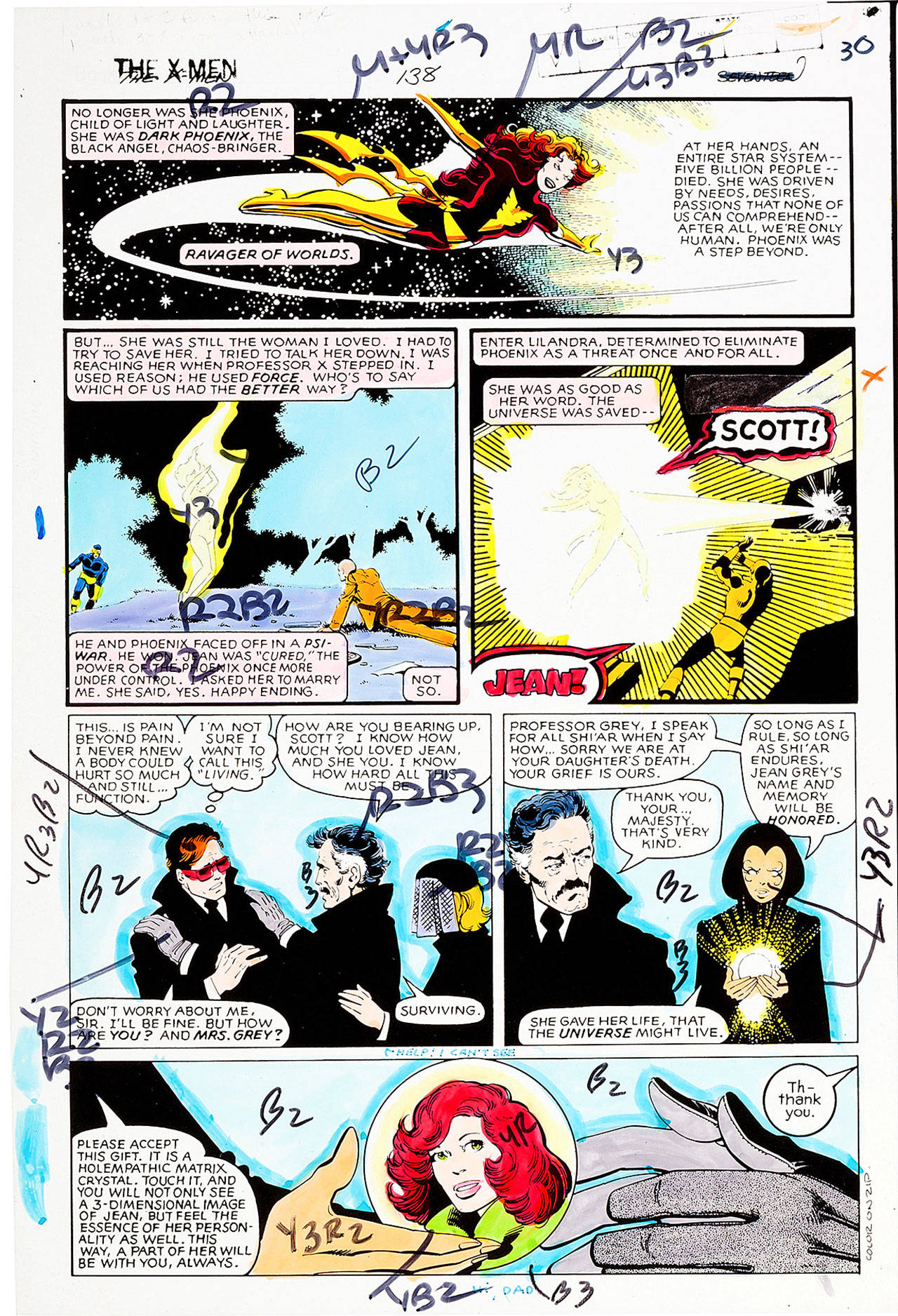Comic book superheroes save humanity in their make-believe universes, but they also make a difference in the real world.
They teach us about American history over the past 80-odd years.
“Sequential Reaction: A History of the American Comic Book,” on display from Feb. 19 to March 14 at the Russell Day Gallery at Everett Community College, showcases the growth of the modern art form and how comics have reflected American culture and social upheavals.
“When people aren’t thinking about the legacy of their work, it speaks more clearly to that given time,” said T. Andrew Wahl, the show’s curator and a comic book historian. “It’s supposed to connect with the culture at that particular time.”
The exhibit includes more than 40 pieces of comic book art by dozens of illustrators published by Marvel Comics, DC Comics, Charlton Comics and Heavy Metal. Around 50 digital images of comic-book covers also will be on display.
Wahl, who leads the journalism and media communication program at Everett Community College, and two other comic-book historians — Steve Sibra and Shaun Clancy, both Puget Sound-area residents — contributed items from their personal collections for the exhibit. Some of the items are one of a kind, such as Wahl’s production art of “X-Men No. 138,” published by Marvel in 1980.
The work of leading comic book writers and artists, such as Jack Kirby, John Byrne and Joe Kubert, is featured in the exhibit, which spans four ages of comic books, which aficionados define as Golden, Silver, Bronze and Modern.
Comics during the Golden Age, between 1939 and 1946, starred superheroes such as Superman, Batman and Captain Marvel doing heroic things, like saving the world or punching Adolf Hitler in the face. They were a welcome distraction from the horrors of World War II.
The patriotic fervor wore away after the war. The popularity of horror, crime and romance comics spawned a moral panic, fueled by psychiatrists who declared that comic books were linked to juvenile delinquency. The U.S. Senate even conducted hearings in 1954 over the uproar.
Under assault from the authorities, the comic book industry stayed on its feet by dialing back the violence during what buffs call the Silver Age, which ran from 1956 to about 1970. New characters such as Spider-Man, the Fantastic Four and the X-Men helped attract a new audience of comic book readers.
Wahl grew up in Lake Stevens reading comic-books from the Bronze Age, defined as between 1970 to 1985. He said the Watergate scandal, racial strife and drug use inspired creators to weave more serious story lines into their comics and create non-white heroes.
In 1972, Luke Cage became the first African-American superhero with his own series, “Hero for Hire,” while female characters such as Vixen and Ms. Marvel added more diversity to the superhero ranks.
And, instead of punching Hitler, Captain America uncovered a government conspiracy spearheaded by a high-ranking government official presumed to be President Richard Nixon in “Secret Empire.”
Wahl said the exhibit is an illustrated walk through American history and social upheavals.
“You’re able to see how racial stereotypes and gender relations have changed over time,” Wahl said. “The villains and heroes (in comic books) very much reflect what American society is struggling with.”
The Modern Age, which comic book fans say began in the mid-1980s and continues today, has been marked by a continued rise in diversity — and also an explosion of commercialization in the form of a boatload of blockbuster movies. Meanwhile, academic fields that critically analyze comics and sequential art have sprung into existence.
Original art of African-American superhero Luke Cage and Jessica Jones, a female character introduced in 2001 by Michael Gaydos from Marvel’s “The Pulse” in 2006, will represent the Bronze and Modern ages at the exhibit.
Evan Thompson: 425-339-3427, ethompson@heraldnet.com. Twitter: @ByEvanThompson.
If you go
An exhibit of art from comic books over the past 80 years will be displayed Feb. 19 to March 14 at Russell Day Gallery in Parks Student Union Room 219 at Everett Community College, 2000 Tower St. The gallery is free.
Hours are 10 a.m. to 4 p.m. Monday through Thursday and 10 a.m. to 1 p.m. Friday. It is closed Saturday and Sunday.
Meet comic book artists during a public reception from 12:30 to 2:20 p.m. Feb. 28 at the gallery.
More at www.everettcc.edu/gallery.
Correction: The story has been modified to correct the name of a comic book that included President Richard Nixon and add a female character who brought diversity to the superheroes in the 1970s.
Talk to us
> Give us your news tips.
> Send us a letter to the editor.
> More Herald contact information.


























